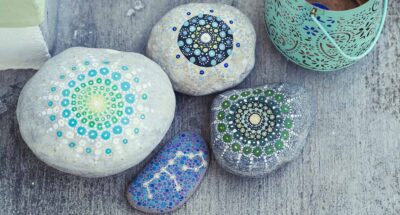
Awe Is All Around Us
Students learn about and create mandalas as a way to experience the awe of visual design.

Students learn about and create mandalas as a way to experience the awe of visual design.
Practice inspired by works of Dr. Keltner and colleagues
Visual design has always provoked a sense of awe and wonder for human beings, from ancient drawings on cave walls to the elaborate painting in European cathedrals, connecting us socially, and making us feel part of something bigger than ourselves.
In a study of 132 adults who visited two art museums in London, UK, almost all participants (87%) reported feeling awe by viewing and being surrounded by art, as well as other positive emotions such as joy and inspiration.
Scientists have also discovered that the act of coloring itself can help people manage their emotions and even reduce test anxiety.
Students experience a lot of stress at school, from pressures to succeed to daily social challenges and conflict. Incorporating art and beauty into the classroom has a dual benefit of improving well-being on its own and eliciting awe, a positive emotion which, too, leads to greater well-being.
Both creating and experiencing art, and even being surrounded by an aesthetically beautiful classroom, can also foster children and adolescents’ resilience and well-being, as well as increase their motivation and success in school.

Do you want to dive deeper into the science behind our GGIE practices? Enroll in one of our online courses for educators!
Comments